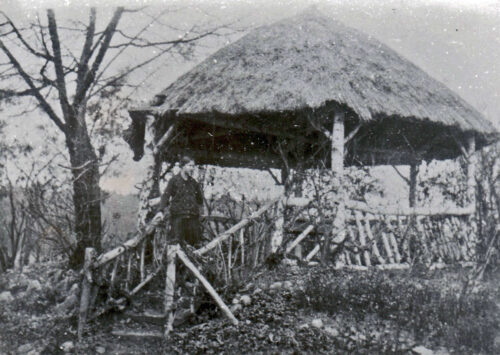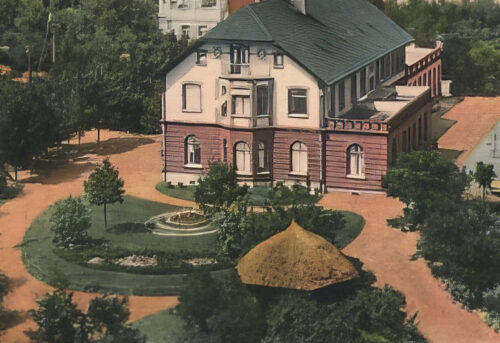Traces of history …
05. Apr. 2024 / Campus Living
A lost place: the Friedensau "Hottentot Temple"
Hardly anyone remembers the Friedensau "Hottentot Temple" today. In times in which discriminatory terms are rightfully disappearing from our vocabulary, such a temple would be out of place. It no longer exists! But there are still traces of it, obvious for everyone to see.
The ministry had to agree in advance
But first things first. In the summer of 1903, Ludwig Richard Conradi was given the opportunity to hold talks with the governor of the German colony of German East Africa (now Tanzania), Gustav Adolf Graf von Götzen, at the Colonial Ministry in Berlin. After missionaries had already been sent from Germany to southern Brazil in 1896, Conradi sought to establish further mission stations in Palestine and the German colonies, especially in what is now Tanzania. Count von Götzen agreed, and Conradi used the coming months to train potential candidates, as well as missionary nurses, at the Tropical Institute in Tübingen. He sent Pastor Johann Ehlers, who had been trained in Friedensau, and the German-American nurse A.C. Enns to Dar es Salaam as the first preliminary team (still without the necessary additional qualifications). About half a year later, in February 1904, four Friedensau graduates set off on their journey to German East Africa, among them the first Friedensau student August Langholf.
The challenge of the unknown certainly also played a role in the fact that Friedensau graduates repeatedly went to the various mission areas.
They brought back more than just experience from their travels
But they did not only travel to foreign worlds. Almost all of them returned to Germany on home leave. And then they recounted their experiences, some even wrote books, such as Ernst Kotz with "Im Banne der Furcht" (Under the Spell of Fear; 1922) or Wilhelm Mueller with "Erlebtes und Erlauschtes in Abessinien" (Things Experienced and Overheard in Abyssinia; 1935). Some of them also brought objects with them to Friedensau, such as animal skins or tools of the natives. A museum was set up specifically for this purpose in a room under the assembly hall. However, there is nothing left of it. After the military hospital was closed in 1947, the museum exhibits could no longer be found.
Paved path as the last trace in Friedensauer Park
In addition to the museum, former and future missionaries also built an African-looking hut with a thatched roof in Friedensau Park, which was embedded in the overall ensemble of the park, and named it "Hottentot Temple". Here, as in the park's arcades, you could sit and relax in peace and quiet. However, the wooden hut also fell victim to the needs of the people of Friedensau at a time when combustibles urgently needed. All that remained was the base of the building, which was surrounded by a dry stone wall and could be reached via (presumably) six steps. Benches stood there. The whole area was bordered by a beech hedge about 1.20 m high. Most people overlooked this place and didn't even notice when it was unexpectedly demolished (around) 2010. What remained and can still be seen is a small paved path about 3 m long, which suddenly ends in a green area on the way from Erich Meyer House to Wilhelm Krumm House.
Missionaries as "servants" of the host countries
One final remark: Conradi had developed his own mission strategy, which clearly stood out from other Adventist missionary societies. His motto was: We must be servants of the countries to which we are sent. Therefore, the top priority for the missionaries and nurses was to learn the language of the people they were working with. The fact that the classical mission in Africa and other countries was already viewed very critically at that time can be seen from the small book by the later principal Dr. Wilhelm Michael "Des Christen Schuld und Sühne" (The Christian’s Sin and Expiation; published in 1931): a worthwhile read (Text: Dr. theol. Johannes Hartlapp | Image rights: Friedensau Adventist University | Archives).

